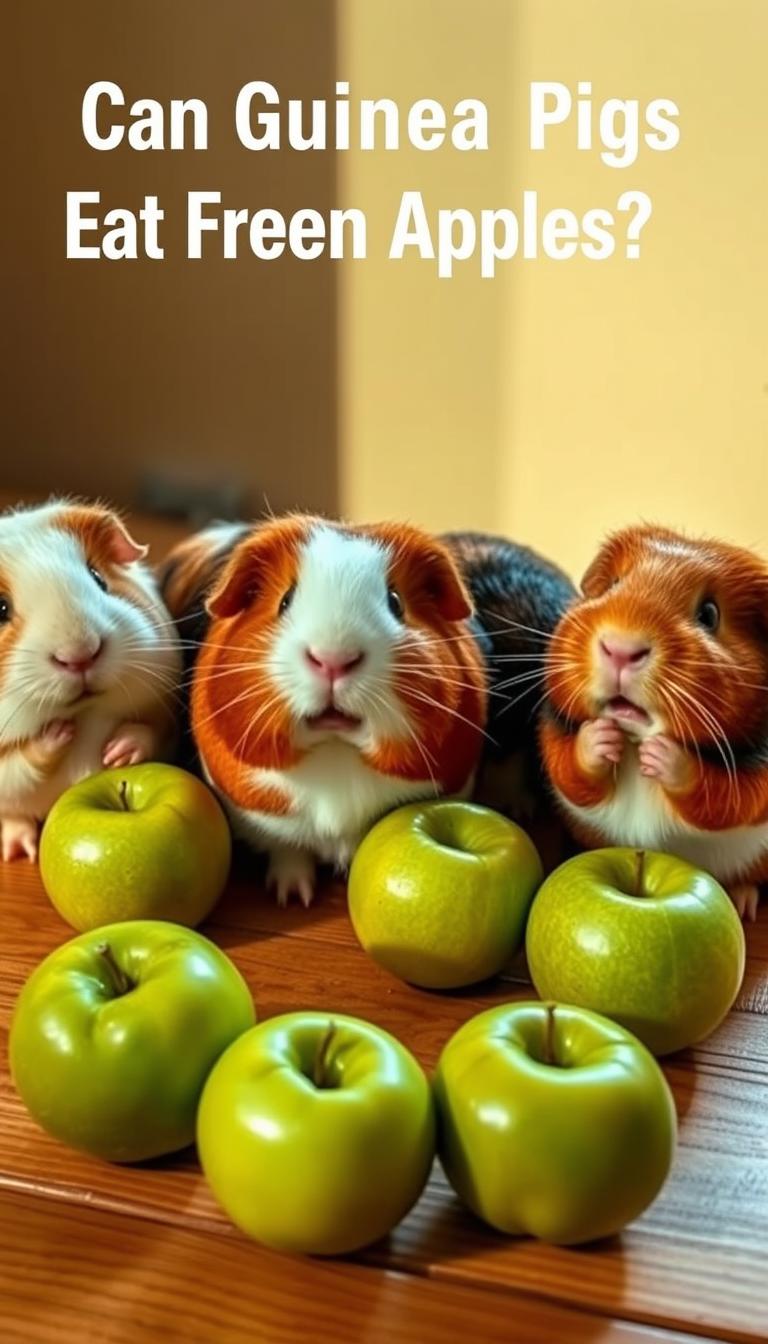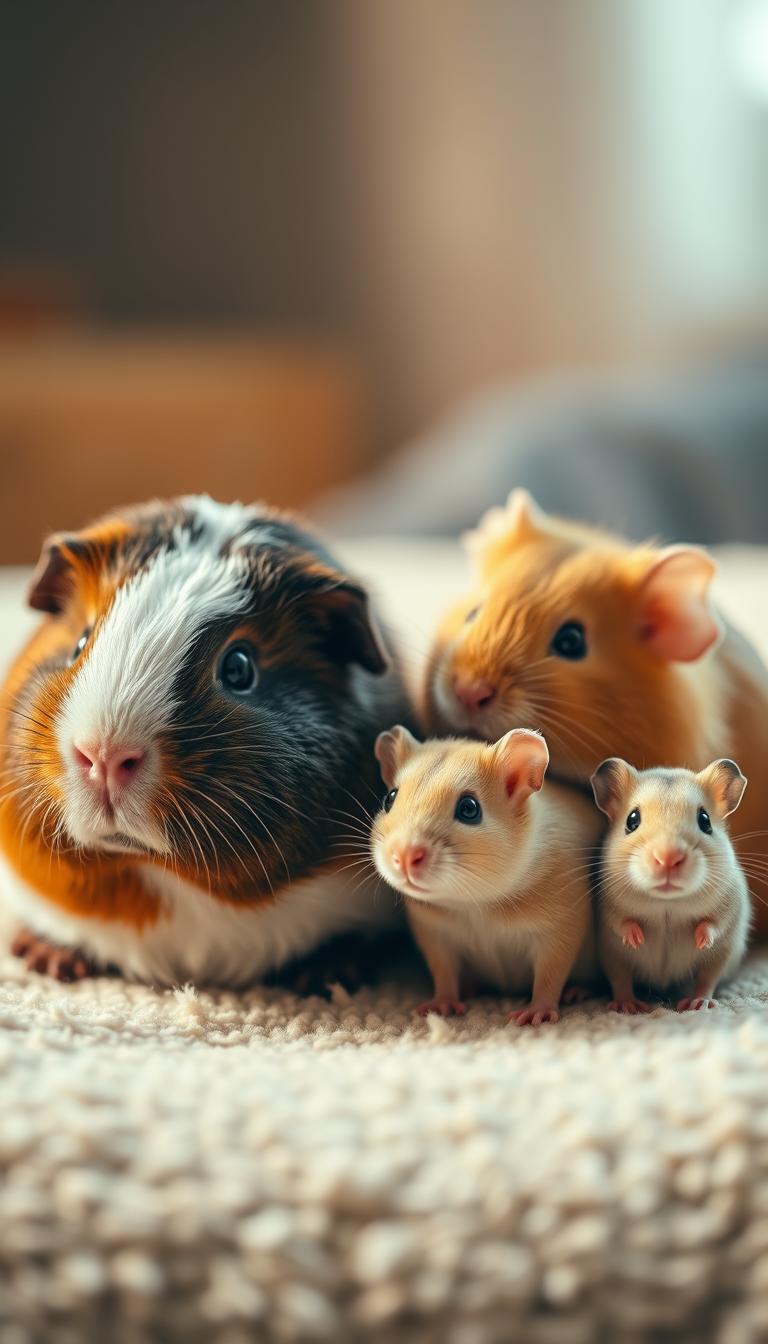Many pet owners wonder about adding fresh fruits to their small companion’s diet. When prepared correctly, crunchy green apples can be a refreshing snack packed with nutrients like vitamin C and fiber. These elements support digestion and immune health, which is vital for animals that can’t produce their own vitamin C.
While these fruits offer benefits, moderation is key. Natural sugars mean treats should only make up 5-10% of daily intake. For more details on balanced feeding, explore this guide to safe snacks.
Your pet’s main meals should focus on timothy hay and leafy greens. Think of apple slices as occasional rewards – about twice weekly. Always remove seeds and cut pieces into bite-sized cubes to prevent choking.
This article covers everything from portion sizes to creative serving ideas. You’ll learn how to balance nutrition with variety while keeping your companion healthy and happy!
Table of Contents
Understanding Your Guinea Pig’s Nutritional Needs

Proper nutrition forms the foundation of a healthy life for small herbivores. These animals thrive on meals mirroring their natural feeding patterns in South America, where fibrous grasses dominate their environment. A balanced approach prevents digestive issues and supports their unique biology.
The Role of Timothy Hay and Fresh Veggies
Timothy hay isn’t just food—it’s a digestive necessity. Making up 80% of daily intake, its rough texture keeps teeth trimmed and gut motility steady. Pair this with leafy greens like romaine lettuce or kale for added nutrients without overwhelming their system.
Fresh vegetables act as vitamin boosters, but moderation matters. Overloading sugary options disrupts their delicate balance. For structured guidance, explore this balanced diet breakdown tailored to their needs.
Why Vitamin C is Crucial
Unlike most pets, these companions can’t produce vitamin C internally. Deficiency leads to scurvy, causing painful symptoms like bleeding gums and joint swelling. Daily veggies like bell peppers or parsley become lifelines—they’re tasty shields against illness.
“A lack of vitamin C turns simple movements into agony. Prevention through diet is always kinder than treatment.”
Wild ancestors relied on diverse plants for survival, a strategy detailed in this habitat-based feeding guide. Replicating this variety at home ensures your pet stays energetic and disease-free.
Benefits of Incorporating Green Apples

Crunchy treats can do more than delight your pet’s taste buds—they might boost their well-being. Green varieties offer a smart way to enhance meals while delivering essential nutrients that complement a hay-focused diet.
Essential Nutrients Found in Apples
Every 100 grams of this fruit packs 4.6 mg of vitamin C, helping meet your companion’s daily needs. The skin holds most of the 2.4 grams of fiber, along with B vitamins that keep energy levels steady. These elements work together to break down food and transport nutrients efficiently.
Trace minerals like iron and potassium play supporting roles. Magnesium soothes inflammation, while potassium keeps muscles functioning smoothly. Even small amounts add up when offered regularly!
How Apples Support Digestive Health
The skin’s natural fiber acts like a broom for the gut, sweeping waste through the system. It also feeds good bacteria, creating a balanced environment for digestion. This prebiotic effect means fewer tummy troubles and happier mealtimes.
Quercetin in apple skins offers bonus protection. This antioxidant fights cellular stress and may sharpen mental alertness. Just remember to serve thin slices with skin intact—and always seed-free!
“Variety isn’t just the spice of life—it’s the foundation of resilience. Smart treats build stronger bodies.”
Can Guinea Pigs Eat Green Apples?

Offering tart fruits requires balancing health benefits with taste preferences. While green apples provide valuable nutrients, their sharp flavor might not excite every pet. Let’s explore how to make these crisp treats work for your furry friend.
Nutritional Advantages and Considerations
The natural tartness comes from higher acidity and lower sugar content compared to red varieties. This makes them a smarter choice for maintaining stable energy levels and metabolic health. Just one ½-inch cube twice weekly delivers fiber and vitamin C without overloading their system.
However, the sour taste can sometimes cause mouth irritation. Introduce small pieces gradually to gauge your companion’s reaction. If they turn up their nose, try pairing slices with leafy greens they already enjoy.
Managing Sugar Content in Treats
Even low-sugar fruits need strict portion control. Exceeding recommended amounts risks gut imbalance, diarrhea, or weight gain. Treats should never replace hay-based meals—think of them as occasional supplements.
“While variety enriches diets, restraint preserves health—a vital balance for sensitive digestive systems.”
Monitor your pet’s stool consistency after introducing new foods. Persistent softness signals it’s time to reduce fruit portions. Remember: a healthy weight and happy tummy always outweigh momentary indulgence!
Identifying Potential Risks and Hazards

Keeping your furry friend safe means understanding both visible and hidden dangers in their snacks. While green apples offer nutritional perks, two key concerns demand attention before serving.
Apple Seeds and Cyanide Concerns
Apple seeds pack a double threat. Their hard texture creates choking risks, while trace amounts of cyanide—a natural toxin—can harm small bodies. Though one seed won’t cause disaster, repeated exposure builds danger.
Always remove core remnants and inspect slices thoroughly. A quick visual check ensures no sneaky seeds remain. This simple step transforms risky scraps into safe treats.
Allergy and Intolerance Warnings
True allergies are rare, but digestive upsets happen. Watch for bloating or loose stools after introducing apples. These signs suggest intolerance, often from sudden diet changes.
If diarrhea occurs, halt all fruits and boost timothy hay intake immediately. Persistent symptoms beyond 24 hours require vet care—dehydration escalates fast in small pets.
“Prevention beats emergency visits. A seed-free slice today keeps tomorrow worry-free.”
Some companions adapt better with gradual introductions. Start with pea-sized portions weekly, monitoring reactions closely. Patience helps build tolerance while keeping meals joyful!
Preparing Apples for Safe Feeding

Serving fresh fruits safely starts with proper preparation techniques. A few simple steps ensure your pet enjoys their treat without risks. Let’s break down the best methods to transform whole fruits into safe, bite-sized delights.
Proper Washing and Peeling Techniques
Always rinse apples under cool running water while gently scrubbing the skin with your fingers. This removes dirt, bacteria, or pesticide residues lingering on the surface. For extra caution, use a vegetable brush – especially if you’re keeping the nutrient-rich peel intact.
Peeling reduces chemical exposure but sacrifices beneficial fiber. If you choose this route, slice thinly to maintain easy chewing. Remember: unpeeled options offer more antioxidants but require thorough cleaning!
How to Safely Remove the Core and Seeds
Slice the fruit into quarters first. Use a sharp knife to cut around the core’s tough center, discarding seeds immediately. Even tiny fragments can pose choking hazards or contain harmful compounds – double-check each piece before serving.
Cut remaining flesh into ½-inch cubes. These manageable portions let small pets gnaw comfortably without swallowing hazards. Store leftovers in airtight containers for up to two days, discarding uneaten bits promptly to avoid spoilage.
“Safe snacks begin with mindful prep. Every slice tells a story of care.”
Fresh, raw apple pieces beat processed alternatives like sauces or dried slices. For insights on feeding other small pets, explore this guide to hamster-safe fruits. Always prioritize crisp textures and seed-free preparations for worry-free munching!
Appropriate Serving Sizes and Feeding Frequency
Balancing treat portions ensures your furry friend stays healthy while enjoying variety. Small bodies need precise amounts to avoid digestive stress. Let’s outline how to keep snacks both fun and safe.
Portion Guidelines for a Healthy Treat
Start with a ¼-inch cube when introducing apples. Gradually increase to ½-inch pieces if no tummy issues arise. This portion control prevents sugar overload while delivering vitamins and fiber.
Always remove uneaten bits within 24 hours. Spoiled fruit risks bacterial growth – a quick cage check keeps meals fresh. Pair apple slices with leafy greens for balanced nutrition.
Timing Apple Treats Within the Weekly Diet
Limit these snacks to twice a week, spacing servings 2-3 days apart. This rhythm lets their system process natural sugars without strain. Track offerings in a feeding log to maintain consistency.
Remember: fruits should make up just 10% of daily intake. For inspiration on rotating treats, explore our guide to other safe fruits like strawberries. Moderation paired with variety keeps meals exciting and nutritious!



